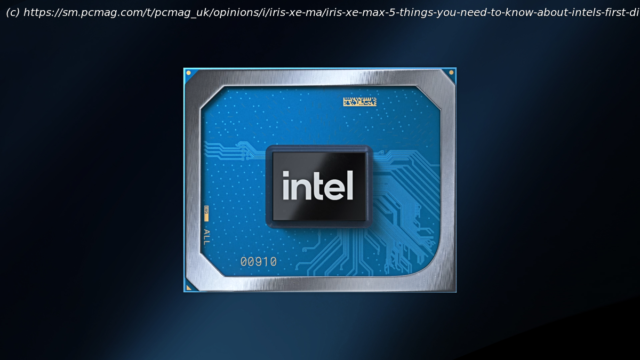Intel’s Iris Xe Max, debuting on laptops first, is the first discrete graphics solution from the chip giant, but its purpose and feature focus may surprise you.
Rumors have been flying and trickles of official info seeping out, for a while now, about Intel’s first discrete graphics processor. Would it be for desktops? Laptops? Gamers or business go-getters? This week, the chip giant provided PCMag with the details in a private briefing. The solution, named Iris Xe Max, will make its way into a few 11th Generation “Tiger Lake”-based laptops first. (Expect them as 2020 draws to a close.) We have a general overview of Iris Xe Max with more details here, but I’ve gathered some of the most important points—and more so, what I see as the implications of Xe Max—for you here.1. It’ll Be a Limited Max Menu, to Start We saw plenty of information about Iris Xe Max, but to set the stage, know that it may not end up coming to loads of laptops in practice, at least at the beginning. It aims for the same general discrete-GPU target as Nvidia’s low-end GeForce MX graphics solution, and those chips don’t show up in all that many laptops, relative to those with either integrated (on-CPU) graphics or higher-end discrete graphics. Specialized content-creation/media-processing laptops, as well as gaming machines, need beefy GPUs—beefier than what the GeForce MX line traditionally serves up. (GeForce GTX, or less often, AMD’s Radeon RX, is the typical minimum class of GPU for gamers.) In contrast, many cheap or portability-first laptops will focus on lower prices and processing power for everyday tasks, meaning GeForce MX or the Iris Xe Max naturally makes the most sense for this niche of in-between laptops. And often, if a laptop OEM is trying to hit a price point, and graphics muscle is not the first order of business, the first thing to get jettisoned is any idea of discrete graphics. You get lower production costs, and it’s less complicated thermally, to use the graphics acceleration found on all modern laptop CPUs—especially as you’re getting them on the chip whether you want ’em or not. Iris Xe Max will launch in just three laptops to start: the Acer Swift 3X, the Asus VivoBook Flip 14 TP470, and the Dell Inspiron 15 7000 2-in-1. These are all slim, portable laptops, and that’s exactly the type of system in which Iris Xe Max will be utilized. Larger, thicker laptops will, as stated, likely be for a specialized purpose that requires the power of a more potent GPU. This also makes sense because thin-and-light laptops are also the same types that the first Tiger Lake chips (part of the lower-power U-Series) are present in. Since these two will work best when joining forces (you’ll only find Iris Xe Max in Tiger Lake laptops), expect to predominantly find Iris Xe Max in these kinds of laptops.2. Surprise! It’s Not Really for Gamers Intel did share some early gaming graphics test numbers with us. We do see some respectable frame rates out of the Iris Xe Max versus integrated graphics, roughly in line with Nvidia’s low-end GeForce MX350 offering. Still, this isn’t being pitched primarily as a gaming boon. That may have been your assumption when you first heard about Intel getting into discrete GPUs, but it makes sense when you consider the rest of the chip giant’s approach to processors. In our meeting, Intel focused more on how Xe Max would help accelerate media-creation and -editing for pro and prosumer content whizzes.






